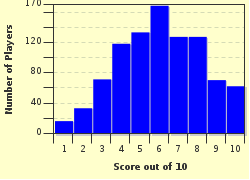Quiz Answer Key and Fun Facts
1. Suppose you're browsing a swords and medieval weapons shop and you spot a long, thin dagger with a plaque saying that it's called a 'mercygiver'. What on earth was a 'mercygiver' used for and why did it have such an odd name?
2. On another shelf of the sword shop you see a plaque that says 'poniard' but there's nothing in the stand. What belongs there?
3. You find a time machine and travel back in time to the 15th century to the middle of a battle, but you don't know where in the world you are. However, thanks to your prodigious knowledge of swords, you notice that all the men are fighting with 'Grosse Messer' and so deduce that you are in what country?
4. During your European tour, you find a small antiques shop specializing in items unique to that country. On the wall, you see a claymore displayed. What country is the antique shop in?
5. The quarterstaff is the English fighting stave. However, many countries used fighting staves. Which of the following is NOT one of them?
6. You're browsing a shop selling Japanese weapons, spot one labeled 'katana', and immediately complain to the shop owner that it is incorrectly labeled. How do you know this?
7. You're flipping through an illustrated book of non-lethal weapons and you find a picture of a device that consists of a pole with two semi-circular prongs with a spring-loaded 'door' between them. It was used to catch horsemen around the middle and pull them to the ground. What is this weapon called?
8. You're glancing through a catalogue and see an ad selling replica caltrops. In medieval warfare, caltrops would most likely have been used against which of these?
9. You're reading a medieval novel, and a character mentions that his army was decimated by Greek fire. What's Greek fire?
10. You're watching a movie and a hardened soldier pulls out his trusty scramaseax, a type of dagger. Judging by his weapon, what nationality is the soldier?
Source: Author
FuzzyElf
This quiz was reviewed by FunTrivia editor
bloomsby before going online.
Any errors found in FunTrivia content are routinely corrected through our feedback system.

